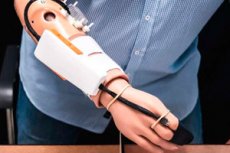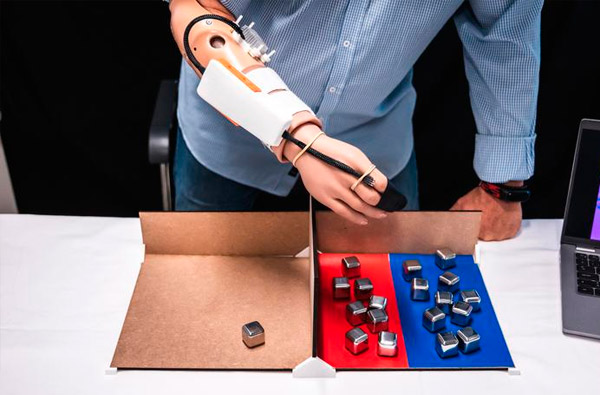Dentures with phantom thermal sensitivity invented
Last reviewed: 07.06.2024

All iLive content is medically reviewed or fact checked to ensure as much factual accuracy as possible.
We have strict sourcing guidelines and only link to reputable media sites, academic research institutions and, whenever possible, medically peer reviewed studies. Note that the numbers in parentheses ([1], [2], etc.) are clickable links to these studies.
If you feel that any of our content is inaccurate, out-of-date, or otherwise questionable, please select it and press Ctrl + Enter.

Dentures that have phantom thermal sensitivity help their wearers feel temperature when touched.
A modern prosthesis should help a person to feel, because without this, the artificial limb will not be able to feel its strength or the weight of an object, which significantly worsens the situation in everyday life. Prostheses that "feel" the weight and textural features of an object are already mass produced, although not as qualitatively as we would like. However, when a person touches, squeezes, lifts something, he feels not only the mass or type of surface, but also the temperature of the object. And, if the ordinary sensation of the element was developed relatively long ago, specialists were able to come to temperature sensitivity only now.
There is information that after the loss of a part of the hand, the remaining segment is able to feel the temperature of the lost palm. Thus, when heating or cooling some areas of the forearm, a person feels heat or cold in the center of the palm surface, or in the finger, although there is no palm or fingers. About a year ago, scientists published a description of a thin elastic thermoelectric film that can be applied to the skin. Such a film is capable of heating or cooling under the action of an electrical impulse. This allows activating the feeling of heat or cold on certain areas of the phantom palm. This function is very important because it transmits sensations almost instantly, just like a real limb.

Specialists from the Federal Polytechnic College of Lausanne and other Italian scientists have combined technological innovations, applying them to an ordinary upper limb prosthesis. They attached a temperature sensor to the index finger of the prosthesis, which records the temperature of the object and sends certain electrical impulses to a special film applied to the preserved part of the limb - namely, to the area responsible for the sensation of the index finger of the hand.
Next, the scientists set up an experiment involving a 57-year-old man who had lost a limb up to the middle of his forearm. The participant was fitted with an improved prosthesis, thanks to which he began to clearly distinguish by touch a container with cold water from a container with hot water (respectively +12 ° C and +40 ° C). The man had no problem sorting metal cubes depending on the temperature. In addition, the new prosthesis was able to distinguish whether he was shaking a real (warm) hand or an artificial hand when shaking hands.
The scientists published the results of the study in Med. Further it is supposed to apply the technology in the prosthetics of moving prostheses equipped with other types of sensitivity. In addition, methods based on neurological technologies are being investigated. These are devices that exchange impulses with the brain.
Details of the experiment are outlined at of the CELL journal
